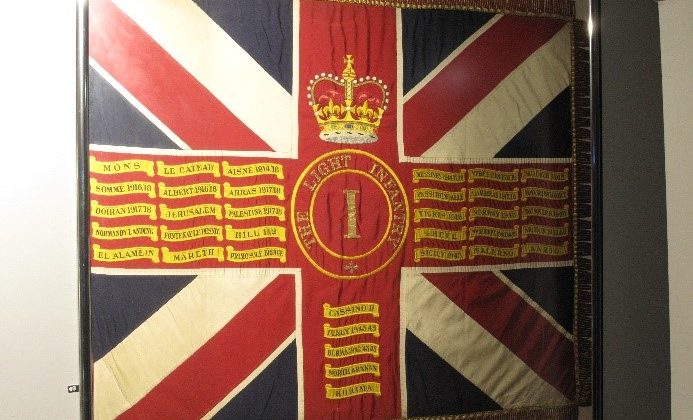The use of Standards and Colours have been a feature of military forces around the world possibly as early as Ancient Egypt. They have taken many forms but in the British and Commonwealth Armed Forces ‘Colours’ most frequently feature as large flags usually mounted on a tall pike.
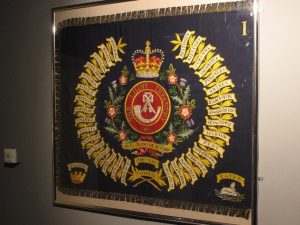
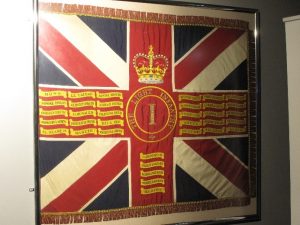
Left: Regimental Colour of 1st Battalion The Light Infantry
Right: Queen’s Colour of 1st Battalion The Light Infantry
In militaries around the world tradition has always played a vital role, and the British Armed Forces have been no exception. In times gone by Colours served a useful purpose on the battlefield, acting as a rallying point for soldiers, but like redcoats, swords and sabertaches they too have been consigned to tradition and ceremony. Additionally, their size has changed greatly over time, reflecting their changing role, and modern Colours are much smaller than those of the 18th and 19th centuries for example.
The shape and design of Colours differ greatly between types of regiment (infantry, cavalry, etc.) and between different line infantry regiments. Later their design might even differ between battalions of the same regiment, particularly after regiments were amalgamated, as individual battalions might hold onto particular honours associated with their Colours (for example, one battalion of the Royal Regiment of Scotland still carry an additional colour, the ‘Assaye Colour’ which was awarded to one of their ancestor regiments following their involvement in the Battle of Assaye in 1803).
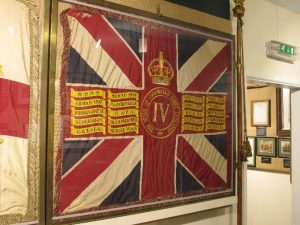
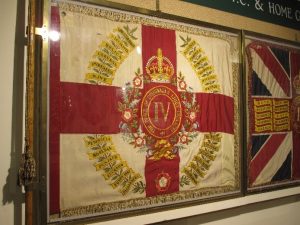
Left: Queen’s Colour of 4th Battalion the Duke of Cornwall’s Light Infantry
Right: Regimental Colour of 4th Battalion the Duke of Cornwall’s Light Infantry
One feature common across nearly all however is the presence of the ‘battle honours’ of the regiment upon the Colours. These are the landmark battles and campaigns in which the regiment has fought and are frequently found emblazoned upon the faces of the Colour. The Colour therefore becomes a physical testament to the achievements of the regiment. As above, amalgamation also had an impact on which battle honours would feature on the Colours.
For this and other reasons, the Colour holds great value to the regiment and to lose the Colour in battle or otherwise was a great dishonour; soldiers would go to extreme lengths to protect it.
Chris Berriman, the Museum’s Collections and Digital Intern (2018-19), talks about Regimental Colours and one of the examples in our collection:
Watch Video of Chris Explaining all about The Regimental Colours
Though they are no longer carried into battle, the tradition of Colours and the heritage they represent continues today. Their modern role can be seen most prominently in the Trooping the Colour ceremony taking place every summer, in which the Foot Guards Regiments parade their Colours for the Queen at Horse Guards Parade in London.
By Chris Berriman


